Primary inflows Max. width 1.2 mi (1.9 km) Average depth 75 ft (23 m) Length 331.5 km Shore length 1,302 km Inflow source Clinch River | Max. length 206 mi (332 km) Surface area 53.875 sq mi (137 km) Surface elevation 311 m Width 1.9 km Mean depth 23 m | |
 | ||
Primary outflows Clinch River, Powell River Outflow location Clinch River, Powell River | ||
Norris Lake is a reservoir that is located in Anderson, Campbell, Claiborne, Grainger, and Union counties in Tennessee. The lake was created by the Norris Dam at the Cove Creek Site on the Clinch River in 1936 by the TVA for flood control. The dam was the first major project taken on by the TVA. The lake, dam and the town of Norris, Tennessee are named after George W Norris, who was a United States senator from Nebraska and wrote the legislation that created the TVA.
Contents
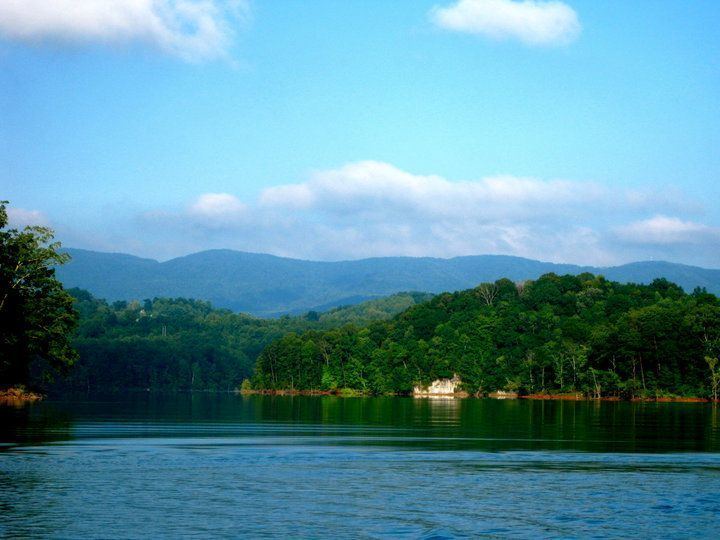
History
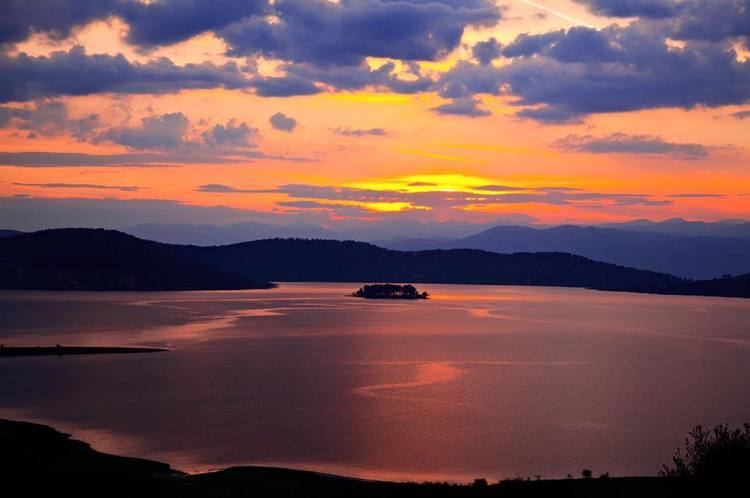
Norris Lake was created by the Norris Dam, which was the first project taken on by the Tennessee Valley Authority as part of the New Deal. Construction began in 1933 and the project was finished in March 1936. The dam cost about $36,000,000 to build. The dam is 265 feet high and expands 1,860 feet across the clinch river. Construction of the dam also created the nearby town of Norris which was created to house the workers and their families.
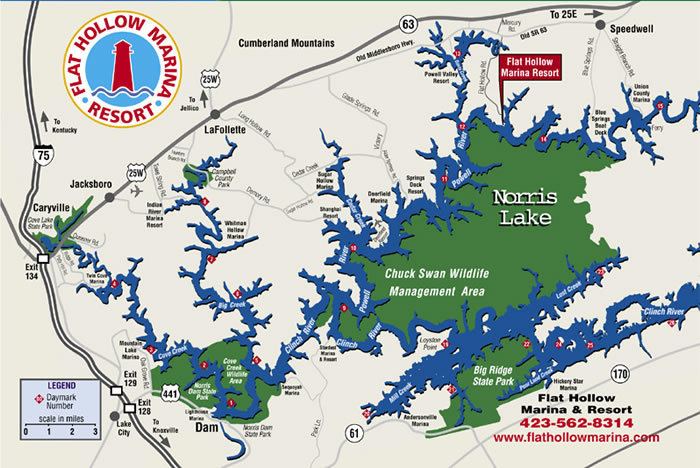
Norris Lake flows 73 miles up the Clinch River and 56 miles up the Powell River from Norris Dam. It has a flood storage capacity of 1,113,000 acre-feet and has 809 miles of shoreline and 33,840 acres of water surface with a maximum width of 1.2 miles and a maximum depth of 210 feet, which makes it the largest lake on a tributary of the Tennessee River and as of 2011 has an ecological health rating of fair. The TVA has also put a clean water initiative into place to keep the lake clean and litter free and the program is monitored by the Regional Watershed Office.
Hydrology
The lake has an average temperature of 55.1 degrees Fahrenheit in the spring, 72.2 degrees in the summer, 56.4 degrees in the fall, and 36 degrees in the winter. It receives an average rainfall of 4.6 inches per month in a year. The lake is about 1,000 feet above sea level depending on the fluctuation of the depth of the lake at any given time with an average inflow of about 1,500 to 2,500 feet above sea level and an average outflow of about 1,000 to 1,500 feet above sea level. It also has an average water fluctuation of about 46 feet.
Geology
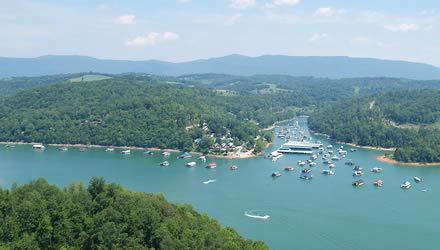
Norris Lake lies within the Great Valley of East Tennessee and the land covers about 240,000 acres on top of the 33,840 acres the reservoir covers. The main rocks of the land are limestone and sandstone and due to the shifting of the area, they are in many of the rock formations that are cut out in the hills. The climate of the area is temperate and continental.
Fish

Most nutrients for the fish that inhabit the lake come from the Clinch and Powell rivers because the lake has difficulty creating its own and is a major reason that the fish population in Norris lake is not as abundant as other lakes in the area such as Boone Lake. The lake also has advisories against the consumption of the fish because of the mercury levels in the lake. Norris lake's main fish species are the Black Bass, the Striped Bass which has a population of 104,228, Crappie which has a population of 102,039, Walleye which has a population of 240,267, and Sunfish.
Vegetation
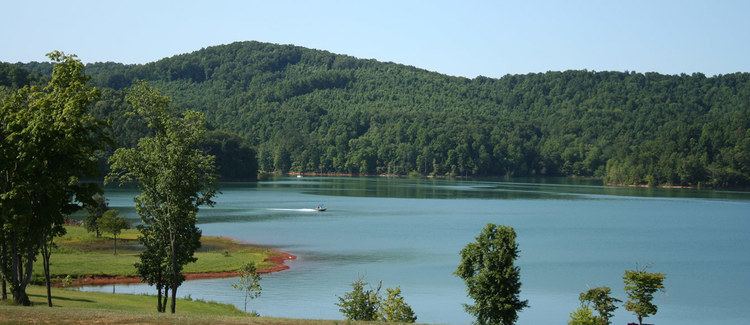
Norris Lake has little underwater vegetation. Stumps remain underwater from the construction of the reservoir. The TWRA has a program installed for fish attraction and use old Christmas trees for most underwater vegetation for fish. The vegetation type around Norris lake is known as Appalachian oak forest. The main type of forest vegetation is oak pine which includes black jack oak, chestnut oak, post oak, scarlet oak, and southern red oak inhabiting the areas that are drier. The areas around the lake that have more moist ground include trees such as white oak, southern red oak, and black oak with short leaf pine composing much of the canopy around the lake.
Economy
The counties that surround the reservoir have a combined population of 189,144 people as of 2013. The main source of industry of the area surrounding the lake is agriculture with the main cash crops being tobacco, corn, and hay. Other sources of income for the area are in the industries of garment, coal, and timber.[11]
Flood Storage
Norris Dam was primarily built for flooding issues in the area and it still serves that purpose today. The Dam and reservoir have a flood storage capacity of 1,113,000 acre-feet.
Power
Norris Dam is a hydroelectric facility and has 2 generating units, each unit is designed to have a generating capacity of 65.7 megawatts with a combined generating capacity of 131.4 megawatts and generated about 301.6 gigawatt-hours in 2007.
Recreation
Norris Lake offers many recreational opportunities. It has several conservation lands such as Norris Dam State Park, The Cover Creek Wildlife Management Area, and Chuck Swan State Forest that offer hiking and other activities and protect undeveloped areas. The Lake is also used for activities like waterskiing, fishing, swimming, and boating.
